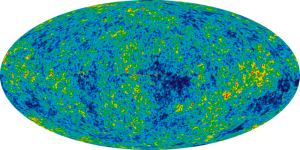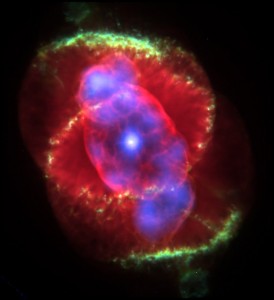
Fig 1. Hubble True-Color Image of the Cigar Galaxy (M82)
When we gaze into the night sky, we typically see only the tiny white dots of stars surrounded by the vast blackness of an apparently-empty space, but in truth space has far more color and interest than our naked eye can reveal. One of the primary questions that students would ask me when I worked at Summers-Bausch Observatory in Boulder, Colorado, was “What is the magnification power of this telescope?” The answer was between a factor of 10 and 100, depending on which eyepiece was in use. What people need to understand is that a telescope is not a giant microscope turned upside down. The problem is not that the objects of interest in space are so small, but that they are so faint. Many of the nebulae and galaxies that we observe are nearly the same angular size as the Moon, but the telescope’s advantage is that it can gather a large quantity of light and funnel it right into your eye or onto film.
If humans had eyes as sensitive as owls, lemurs, and other large-eyed nocturnal animals, we would be able to see the rich detail and color seen in this time-lapse video of the Milky Way. Clearly, the space between stars is not always empty, nor is it colorless.
Part of humans’ limitation is that our night vision is color-blind and we cannot easily detect existing color if the light is too dim. With the naked eye, it is possible to make out that Mars is slightly reddish in color when compared with the surrounding stars. We can perceive that there are blurry regions in space, such as the Orion nebula in the middle star in the sword of the constellation of Orion. With a telescope’s light-concentrating ability, coupled with a long exposure on film, we can see that the fuzzy patch is in fact far more colorful and interesting than our naked eye implies (See Fig. 2)

The Orion nebula (M42, or NGC 1976) is a star-forming region located approximately 1500 light years from us. The red regions are gas and dust clouds illuminated from behind and the blue regions are reflecting the light from foreground star. This beautiful nebula offers one of the best opportunities to study how stars are born partly because it is the nearest large star-forming region, but also because the nebula’s energetic stars have blown away most of the obscuring gas and dust clouds that would otherwise block the view.
Observations from ground-based telescopes are limited by such things as clouds, aerosols in the atmosphere (pollution), light pollution from cities, and atmospheric turbulence (poor seeing). To eliminate these problems, scientists have put telescopes in orbit. The Hubble Space Telescope (HST) has produced thousands of beautiful images including this breathtaking view of the Orion Nebula, taken in 2006 (Figure 3).

As is the previous ground-based image, this Hubble image is in the visible range in true color, but note the increased depth of color and crispness of detail. No ground-based observations can deliver this clarity. This image is considered to be the best ever made of the Orion nebula, and shows filaments of gas and dust blown by stellar wind, forming stunning shapes that gravity alone could not produce.
Satellite observatories can not only take clearer pictures of the visible range of light. They can also take images of light outside of the visible spectrum and literally “see” what is invisible. The visible range of light is just a small portion of the electromagnetic spectrum which also includes radio, microwave and infra red (IR) at lower frequencies (longer wavelengths) than visible, and ultra violet and X-rays at higher frequencies (shorter wavelengths). Infra red, ultra violet, and X-rays that reach the Earth from space are blocked by the atmosphere, while visible light passes through. Our sun emits primarily in the visible spectrum. It is not coincidental that this is the light range to which our eyes are sensitive. Radio and microwaves can pass freely through the atmosphere, but our eyes would have to be the size of satellite dishes to detect them.
Separate measurements of a deep-space object can be made by different instruments observing different wavelengths. When these observations are combined into one image, the results can be both educational and visually stunning. Figure 4 is a compilation from three orbiting observatories of Kepler’s supernova remnant. A supernova is the fiery death of a massive star. This was first observed by astronomer Johannes Kepler 400 years ago. Kepler’s supernova (SN 1604), the most recent such object seen to explode in our Milky Way galaxy, resides about 13,000 light-years away in the constellation Ophiuchus.

By color-coding those data and combining them with Hubble’s visible-light view, astronomers are presenting a more complete picture of the supernova remnant. Visible-light images from the Hubble telescope (colored yellow) reveal where the supernova shock wave is slamming into the densest regions of surrounding gas. The Spitzer telescope shows microscopic dust particles (colored red) that have been heated by the supernova shock wave. The dust re-radiates the shock wave’s energy as infrared light. The Chandra X-ray data show regions of very hot gas, and extremely high-energy particles. These data combined give us a detailed picture of the dynamics of the expanding supernova remnant. Supernovae are responsible for producing all of the dust and metals in the universe. Earth and everything on it were formed from supernovae remnants such as this.
Another way that a star can end its life is in a planetary nebula. Planetary nebulae form some of the most beautiful and mysterious forms that can be observed in space. A planetary nebula occurs when a star somewhat larger than our sun has fused most of its hydrogen and begins ejecting its outer layers through pulses of its stellar wind, creating a series of expanding glowing shells of ionized gas. Unlike a supernova, this does not occur violently all at once, but incrementally over time. This is a relatively short-lived phenomenon, lasting a few tens of thousands of years, compared to a typical stellar lifetime of several billion years. Perhaps the most beautiful and fascinating planetary nebula is the Cat’s Eye Nebula (NGC 6543). From ground-based telescopes, this object is almost too small and faint to determine.

However, Composites of satellite data have revealed stunning detail. Figure 6 is a false-color composite of Chandra X-ray and optical data taken by the HST. Red denotes hydrogen, blue is neutral oxygen, and green is ionized nitrogen.
Clearly there are some very complex dynamics at work to create such a complicated shape. The intricacy of the structure may be caused in part by material ejected from a binary central star, but as yet, there is no direct evidence that the central star has a companion. As spectacular as this image is, newer observations with Hubble’s Advanced Camera for Surveys (ACS) show even more detail in the outermost shells of the expanding planetary nebula.

This image reveals spectacular concentric rings of dust surrounding the inner core. Also visible are linear structures radiating from the center like spokes. The concentric rings surrounding the inner nebula seem to have been ejected at intervals of from a few hundred to a few thousand years, a timescale which is rather difficult to explain. Thermal pulsations, which cause formation of planetary nebulae, are believed to take place at intervals of tens of thousands of years, while smaller surface pulsations are thought to occur at intervals of years to decades. Despite intensive study, the Cat’s Eye Nebula still holds many mysteries. A mechanism which would eject material over the timescales required to form the concentric rings in the Cat’s Eye Nebula is not known yet. It is difficult to determine distances to planetary nebulae, however high-resolution measurements of the expansion of NGC 6543 have been used to calculate the distance to the planetary nebula to be 3300 light years. This object contains so much mystery and beauty; hopefully newer and more powerful orbiting telescopes can show us even more.
So far, all of the images discussed here have come from within our own galaxy, the Milky Way, which extends to a distance of 100,000 light years. Orbiting telescopes like Hubble, Chandra, and Spitzer give us beautiful images of other galaxies at astounding distances, such as the beautiful starburst galaxy known as the Cigar Galaxy (M82 or NGC3034) at a distance of 12 million light years.

Figure 8 is a composite image made from three satellite observation projects. Visible aspects of the galaxy were taken by the HST as shown in Fig. 1. The visible image is combined with invisible infra red and X-ray spectrums: Spitzer photographed it in IR, which shows dust emission, and Chandra photographed it in X-ray (showing mostly synchrotron emissions from fast electrons). The X-ray emissions (shown in blue) indicate that M82 is home to an intermediate-mass black hole, the first one ever detected. M82 is a starburst galaxy, whose center is believed to be experiencing an episode of intense star formation. The red glow is from a “super wind” of ionized hydrogen gas, expanding out from the center as a result of the combined winds of many individual stars.
It is important to realize that the farther out into space we look, the farther back in time we are simultaneously looking. The universe is constantly expanding. Is there a limit to how far we can look? Yes, the limit is almost the beginning, the Big Bang; satellites can actually record an image of the ionization of the universe in the immediate aftermath of the Big Bang! This observation came about quite accidentally in the field of Radio astronomy. In 1964, having building the most sensitive radio antenna, Arno Penzias and Robert Wilson encountered noise in the microwave range which they could not explain. At first they believed their instrument was picking up some sort of interference by terrestrial sources. After years of study, it was proven that this radiation was in fact created in the fiery aftermath of the Big Bang at a temperature 3000K, red-shifted until it is a temperature of 2.75 degrees above absolute zero. In 1978, Penzias and Wilson were awarded the Nobel Prize in physics for their discovery. Since then scientists have been mapping tiny fluctuations, or anisotropies, in this background to find clues about the specifics of the Big Bang. The Wilkinson Microwave Anisotropy Probe (WMAP) spacecraft measures differences in the temperature of the Big Bang’s remnant radiant heat, the Cosmic Microwave Background, across the full sky. This is what it looks like.

Figure 9 is a picture of literally the largest and oldest structure in the universe. The anisotropies shown in this image represent fluctuations of approximately one-one thousandth of a percentage point, and are due to quantum fluctuations on the subatomic level now spread out across the entire universe. The detailed measurements of the WMAP project have helped astronomers determine the age of the universe to be 13.75 billion years with an uncertainty of only 1%.
With the aid of orbiting artificial “eyes”, we can see that space is a far less empty and more interesting place than humanity could ever imagine. One wonders how many other beautiful things await discovery as satellite technology improves. One must also wonder how many other “eyes” could be out there looking back at us.
Images by NASA, Salzgerber, and DSI Images
